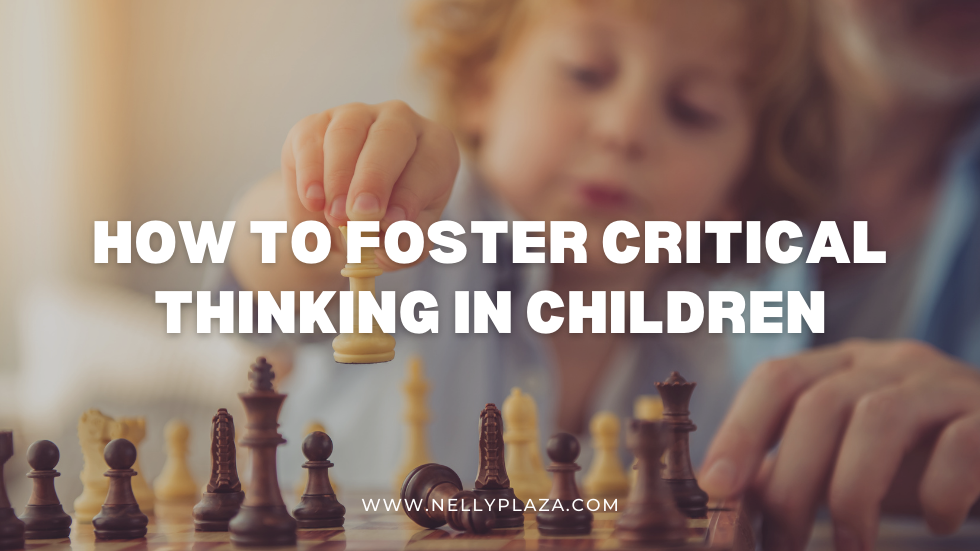Critical thinking is an integral part of children’s development, as it helps them be better at communication and problem-solving, among others.
In a book entitled “Is It Santa?” readers are introduced to the characters Mother Rebekkah and her three children. Their story starts upon their return to their house, where they’re welcomed with Mother Rebekkah’s cookies being moved from where they were originally placed. This small change sparks the children’s curiosity and suspicions, pushing them to try and solve the mystery behind all of it. The three children observed and studied the whole situation closely throughout the day, looking for clues and bits of information that might help answer their questions.
Throughout this book which is based on actual true events by Nelibeth Plaza, the readers are shown how the children deduced the mystery, hacking their brains to connect the information they’ve gathered to solve who their mystery man is. At the end of the day, the youngest child, Jacob, solved the mystery and found out who they were looking for.
Critical Thinking in Children.
Critical thinking is all about receiving information and using these bits of knowledge to make the most out of it in the situation. Learning and integrating critical thinking in one’s life has a lot of advantages, making it one, if not the most necessary and beneficial skill that one can learn, which is why as parents, it’s essential to build and encourage this skill in children.
Critical thinking helps an individual be eloquent in expressing their thoughts and beliefs to others, making it the driving force for better communication, which fosters better mutual understanding with others and results in fewer conflicts. In addition, it also encourages out-of-the-box thinking, which is a valuable capability for anyone to have.
While critical thinking only starts to formally develop at ages 13 and older, when children can better understand logical concepts, it’s better to introduce the general idea of how it’s achieved to children even younger. However, teaching this skill can be pretty challenging, especially for children who are heavily exposed to the academe. This isn’t to put a bad image on schools and the general academic curricula, but in comparison with the other fundamental subjects that are taught at school, like science and math, critical thinking won’t be built based on repetition and memorization, which are the commonly used methods in school.
Schools are built with drills and exams. Children commonly learn through fast-paced explanations and examples under this system. Rather than encouraging children to think outside the box, they are limited to following specific methods, leading to constant and unalterable answers. Schools are commonly built for concise learning that doesn’t leave enough room for open-ended questions and discussion. This school system, in general, helps with children’s education, but this learning isn’t directed toward critical thinking.
This is why rather than the academe, parents have a more significant role in making sure children form a critical thinking mindset and develop the drive to dig more for information and not just accept what’s simply given on the surface level. Here are what parents should do or encourage their children to do:
Explain and Elaborate Everything
Children are naturally curious beings. Curiosity is how they learn and initially navigate the world. As they develop an independent sense of thinking, they likewise begin to frequently ask questions involving the what’s and why’s concerning the environment around them. This can tire their parents out, making them brush these questions off, and instead of answering them correctly, parents often give the easiest or the most outlandish answers.
Rather than continuing this practice, parents need to cater to their children’s questions by answering them satisfactorily. Besides the primary branches of knowledge, children also need to be taught how to think open-endedly, and only then will they continuously grow their understanding of the world. Their constant questions of “why” will help them gain skills and knowledge that will help them justify and be more confident in their abilities.
Discourage Them from Blindly Obeying
One of the best ways to discourage critical thinking is by forcing children to obey rules without questioning their purpose, significantly what they can gain if they follow them. This is in line with learning the why’s to think independently and make sound judgments. By understanding the reasons behind things imposed on them, they can likewise develop their reasoning and learn how to better express dissatisfaction and argument. Instead of establishing rules children only need to follow, it’s healthier if they’re included in the discussion.
Foster Curiosity in Children
Most critical thinking is developed around children’s drive to learn continuously. As critical thinking relies heavily on receiving information, it’s crucial that children are encouraged to seek new pieces of information constantly. And what better way to do this than by sparking the children’s curiosity. Allow them to explore and learn about the world through experience and learn from their mistakes. This cycle from committing mistakes to learning from them will serve as the stepping block for children in developing critical thinking.
Teach Them Open-Mindedness
When children are taught to be open-minded, they are prepared to approach problems in different perspectives and ways. To foster this in children, parents should encourage them to think from other points of view, introduce alternate explanations to their questions, and help them feel different solutions to their problems.


Trackbacks/Pingbacks